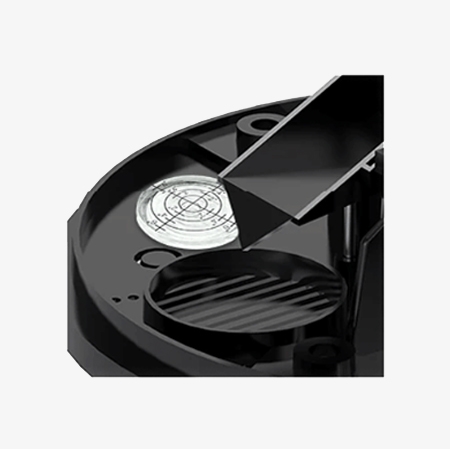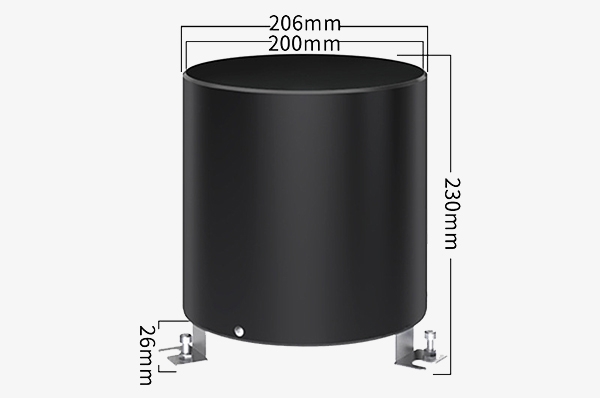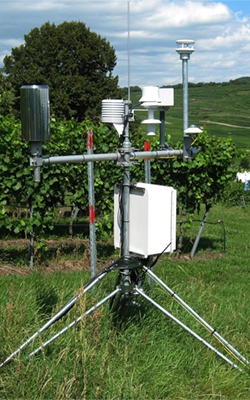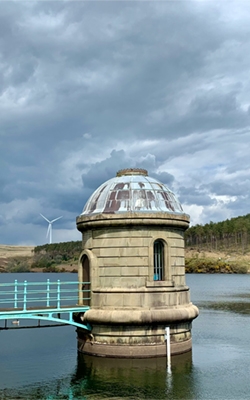High quality rain gauge has a clock circuit, which can query up to 10 register content. The tipping rain gauge's shell is made of 304 stainless steel, with strong anti-rust ability and good appearance quality. SISCO tipping bucket rain gauge can be used in weather stations, hydrology stations, agriculture and
forestry.

Tipping Bucket Rain Gauge with Level Calibration
- The chassis is equipped with an internal leveling bubble, allowing for precise adjustment of the bottom corners to ensure the device is properly leveled during installation.
- When the rain gauge is placed on uneven ground, the built-in leveling bubble allows for fine adjustments to stabilize the unit.
- Maintaining a perfectly horizontal position is critical for ensuring that rainfall enters the collection funnel evenly. The integrated leveling system ensures that the rain gauge remains properly aligned, leading to more accurate and reliable precipitation measurements.
- Even slight tilting can lead to water spilling, splashing, or bypassing the measuring mechanism entirely. By ensuring the rain water gauge remains level, the system eliminates one of the most common sources of error in rain measurement, ensuring consistent and trustworthy results.

The Tipping Rain Gauge Adopts a Three-dimensional Streamlined Design
- Three-dimensional streamlined structure improves drainage efficiency, ensuring that rainwater flows cleanly through the tipping bucket with minimal splashing or residue.
- Smooth internal surfaces make cleaning and maintenance easier, reducing the chance of sediment buildup and ensuring long-term measurement accuracy.
- The optimized shape allows rainwater to collect and pour evenly, ensuring that each tipping event reflects a precise volume and minimizes partial or premature tipping, which can cause measurement errors.
- With smooth interior surfaces and no sharp corners, the rain gauge can be quickly rinsed or wiped clean. This lowers maintenance time and helps maintain long-term accuracy in outdoor environments.
Dimension

Applications
The SISCO rain gauges are widely used in hydropower stations, reservoirs, agriculture and forestry, meteorological stations, and hydrological stations to accurately measure rainfall for weather observation, irrigation planning, and water resource management.

Reservoir

Weather Station

Hydrological Station

Agriculture and Forestry
| Model | SISCO-RG-XS-RS01O |
| Rain Inlet Dimension | φ200mm |
| Acute Angle of Cutting Edge | 40°-45° |
| Range | 0 ~ 100mm (range only analog signal, RS485 signal is not limited) |
| Resolution | 0.1mm/0.2mm/0.5mm |
| Rain Intensity Range | 0.01mm-4mm/min (Maximum rain intensity allowed to pass 8mm/min) |
| Accuracy | ≤ ± 3% |
| Output signal | RS485 (Standard Modbus-RTU protocol, device default address: 01) |
| Pulse signal (One pulse represents 0.1mm/0.2mm/0.5mm rainfall) | |
| Supply voltage | 5-24V DC (When the output signal is 0-2V, RS485, SDI-12) |
| 12-24V DC (When the output signal is 0-5V, 0-10V, 4-20mA) | |
| Working temperature | 0℃ ~ 70℃ |
| Working humidity | < 100% (no condensation) |
Q1: What is a rain gauge?
A1: A rain gauge is a meteorological instrument designed to accurately measure the amount of rainfall over a set period, usually recorded in millimeters or inches. It collects rainwater in a funnel or container, allowing for precise quantification of precipitation, which is vital for weather forecasting, agricultural planning, water resource management, and environmental research. There are several types of rain gauges, including manual gauges that require periodic reading, tipping bucket gauges that automatically record rainfall by counting bucket tips, weighing gauges that measure the weight of collected water, and advanced optical or radar-based gauges that estimate rainfall remotely.
Q2: Why a rain gauge is important?
A2: A rain gauge is important because it provides accurate and reliable measurements of rainfall, which are essential for weather forecasting, managing water resources, agriculture, and flood prevention. By tracking precipitation levels, rain gauges help farmers optimize irrigation, enable meteorologists to predict storms and droughts, support water authorities in managing reservoirs and flood control, and contribute to climate research and environmental monitoring. Without precise rainfall data, it would be much harder to make informed decisions that protect communities and sustain ecosystems.
Q3: Can a rain gauge be any size?
A3: A rain gauge can come in various sizes, but its dimensions must be carefully designed to ensure accurate and reliable measurements. Larger gauges can collect more rainwater and are often used in professional or research settings, while smaller, more portable gauges are convenient for personal or educational use. However, the size of the collection area affects the sensitivity and precision of the readings, so rain gauges are typically designed following standard dimensions to balance ease of use with measurement accuracy.
Tips: What are the types of rain gauges?
The common types of rain gauges include:
- Manual Rain Gauge (Graduated Cylinder): A simple funnel and measuring tube where rainfall is collected and read manually.
- Tipping Bucket Rain Gauge: Contains a small bucket that tips when filled to a set volume, triggering a sensor to record each tip automatically.
- Weighing Rain Gauge: Measures the weight of collected water to calculate rainfall, offering high accuracy and the ability to measure snow.
- Optical Rain Gauge: Uses infrared or laser beams to detect raindrops as they pass through a sensing area, providing non-contact measurements.
- Radar Rain Gauge: Employs radar signals to estimate rainfall over a large area without direct contact with rain.
Thank you for buying industrial test and measurement equipment on SISCO.com, all products sold by SISCO and the partner cover a 12 months warranty, effective from the date of receiving the products.
What is covered?
SISCO is responsible for providing free spare parts, and free technical support to assist the customer to repair the defective products until the problem is solved.
What is not covered?
- Product purchased from anyone other than a SISCO store or a SISCO authorized reseller.
- Expendable parts.
- Routine cleaning or normal cosmetic and mechanical wear.
- Damage from misuse, abuse or neglect.
- Damage from use of parts other than SISCO approved.
- Damage from use outside the product’s usage or storage parameters.
- Damage from use of parts not sold by SISCO.
- Damage from modification or incorporation into other products.
- Damage from repair or replacement of warranted parts by a service provider other than a SISCO authorized service provider.
- Damage caused by the application environment not meeting the product usage requirements and the failure to perform preventive maintenance.

